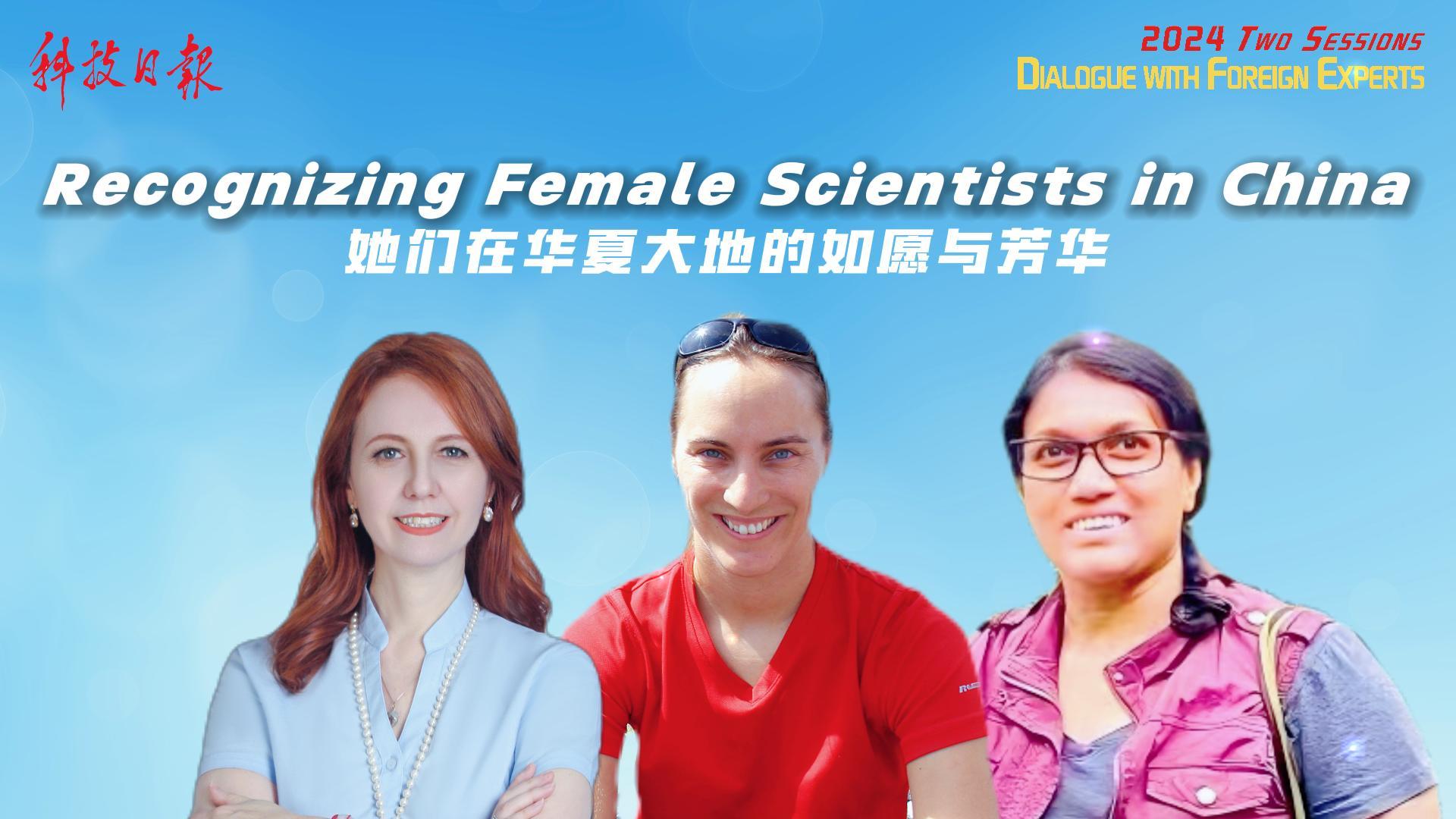Encouraging Female Researchers to Hold up 'Half the Sky'

Sara Platto, Marie-Luce Chevalier,Uromi Manage Goodale (From left to right). (COURTESY PHOTO)
By LONG Yun & BI Weizi
In China's scientific community, female researchers are increasingly supported and provided with a flexible environment in which gender equality is well-recognized and implemented. Three foreign female experts shared their perspectives on how China is opening more doors for women in the sci-tech field.
Creating a culture of flexibility and well-being
"For me, coming to China as a young scientist, which happened 12 years ago, was a great opportunity," said American plant ecology expert Uromi Manage Goodale, a professor at Xi'an Jiaotong-Liverpool University.
This sentiment is echoed by Marie-Luce Chevalier, a French/Belgian geoscientist at the Chinese Academy of Geological Sciences (Beijing). From her perspective, the "flexible working environment" that allows her to maintain a work-life balance, is especially important for female researchers with family responsibilities.
Sara Platto, an Italian professor of animal behavior and welfare from Jianghan University (Wuhan), also found China's academic environment supportive in balancing her roles as a mother and a professional. "The academic environment in China makes being a professional mother a little bit easier," she said.
Beyond flexibility, the well-being of female employees is also a priority. Chevalier pointed out there are free yoga classes and other leisure activities at her institute, which all contribute to a more productive and healthy work environment.
Breaking barriers and fostering collaboration
China has been taking growing action to foster the career growth of women in science, an area where they are still underrepresented worldwide.
"There are no extra barriers as a female scientist," said Goodale, attributing this to the supportive policies and environment that welcome young female scientists and faculty members.
Platto's journey in China is particularly inspiring, as she reflected on her pioneering role in animal welfare since 2007. "I was the first female foreign scientist in China to work on animal welfare," she said, adding that she has seized the opportunity to initiate projects and educational programs in a then-emerging field with the government's support.
In 2021, the Ministry of Science and Technology and other departments issued a document to encourage female researchers to "hold up half the sky" in the sci-tech field. It proposed to set up female scientist-led projects in major national research plans and relax age restrictions for women in task and fund applications.
Furthermore, beginning this year, the National Natural Science Foundation of China (NSFC), one of China's largest research funders, has extended the eligibility of female researchers for early career awards to the age of 48. Previously, the age limit for the Excellent Young Scientist Fund, organized by NSFC, was set at 45 for male and female applicants alike.
"That way, the decision-makers recognize that women spend more time raising kids and taking care of their family. So that's quite a nice gesture," said Chevalier. She appreciated all these efforts to accommodate and support female researchers.
Encouraging the new generation
China is creating an environment where female scientists can thrive, contributing significantly to the global scientific community while promoting gender equality. Looking to the future, the three scientists have words of encouragement for young women aspiring to enter the field of science.
"Pursuing a career in science is like running a marathon. It demands long-term commitment and perseverance," said Goodale. Chevalier encouraged young female students to study hard and chase their dreams without fear, while Platto called for a shift in mindset that encourages girls from an early age to embrace challenges and not fear failure.






